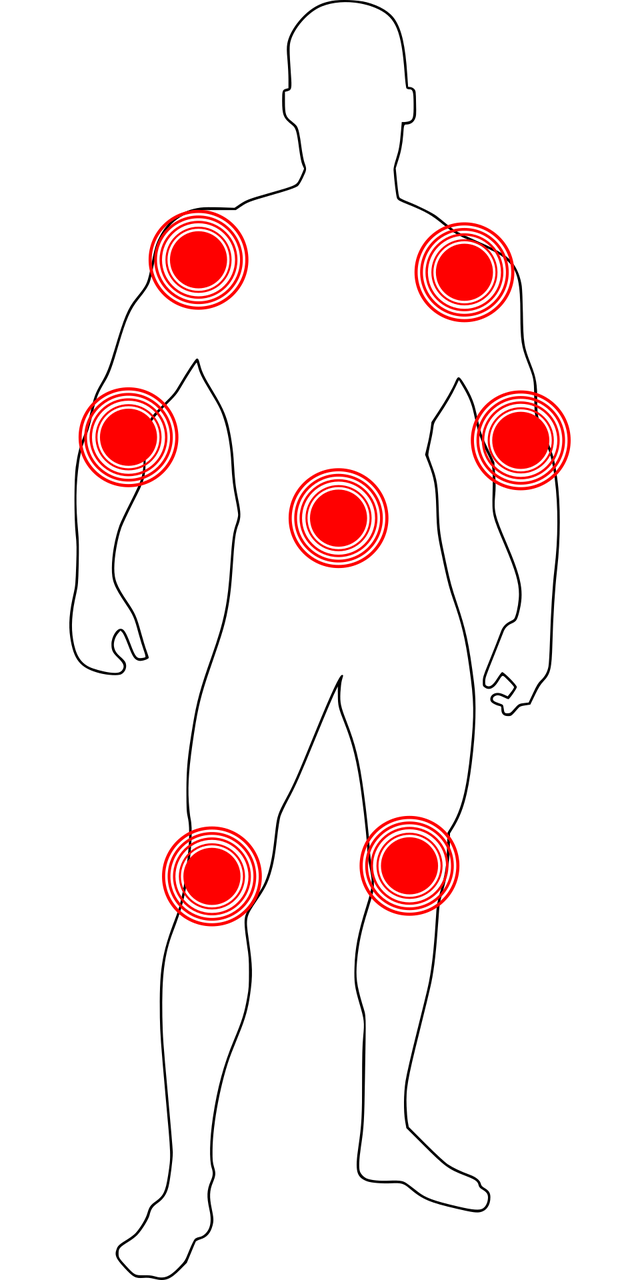Pain and Mental Health - Exploring Acute and Chronic Pain
As youths, a lot of people get involved in a lot of musculoskeletal activities, all in the name of keeping fit, or while working to get their daily bread, and this could lead to musculoskeletal pain. When people present themselves to a clinician as having pain, the question then becomes if it is benign musculoskeletal pain or a warning sign for an underlying serious condition.
If we have to break down the definition according to its name, then musculoskeletal pain would be pain that affects the muscle or the skeleton. These can be pain in the joint, trauma injuries, occupational repetitive motion pain, and other types of pain such as osteoarthritis pain. Pains can also be neuropathic pain which is pain caused by lesions or diseases that affect the somatosensory nervous system. It is an unpleasant experience associated with tissue damage or potential tissue damage.

https://pixabay.com
These types of pain are treated in different ways. Neuropathic pain can be a result of a nerve-giving motor, nerve-giving sensation, and diabetes-associated neuropathic pain. Let's not demonize pain in general because pain is normal. It is a part of our protective device but when we start to live in constant pain, then it becomes abnormal. About 20% of people have experienced pain persistent for more than 3 months. When people go to a clinician, it is important to understand the severity score of the pain, so the clinician would ask for the severity of the pain which I would show in this table
| Score | Severity |
|---|---|
| 0 | No pain |
| 1 | Minimal pain |
| 2 | Mild |
| 3 | Uncomfortable Pain |
| 4 | Moderate |
| 5 | Distracting |
| 6 | Distressing |
| 7 | Unmanageable |
| 8 | Intense |
| 9 | Severe |
| 10 | Incapacitating |
Pain has a two-way system where there is a noxious stimulus that activates the nociceptors which transport the information to the brain through the spinal cord. If the information is dangerous and liable of causing tissue damage, then pain output is released via the descending tracts which go through the spinal cord. Pain can occur in situations of tissue trauma, sustained postured over a long period of time which can be released by movement, and pain experience is different from one person to another.
Pain is a multidimensional experience produced by neuro signature patterns of nerve potentials in the brain. There are multiple brain centers in the brain that work together to create the pain experience. This center can include the occipital lobe and other brain areas that create pain potentials which are referred to as body-self neuromatrix. The brain generates the experience of the body including pain and Sensory information merely modulates the experience and does not create it.
NSAIDs are usually the first line of pain medication for short-term acute nociceptive receptors which includes aspirin, ibuprofen, celecoxib, and pain relief such as acetaminophen which releases COX which produces prostaglandins which reduces the threshold of a painful stimulus blocking COX-1, or COX-2 which will reduce inflammatory based pain. In the chronic pain aspect, NSAID doesn't work as it is not caused by inflammatory conditions. Opioids such as morphine, fentanyl, and so on can be used but these drugs only have a short effect as the underlying cause is not treated yet. Opioids cannot be used for a long period of time, for example, Morphine can be very addictive if used for a prolonged period of time and it can also give negative feedback. Antidepressants, anticonvulsants, serotonin-specific reuptake inhibitors known as SSRIs, and Serotonin noradrenaline reuptake inhibitors (SNRI), can also be used to treat pain. The Serotonin noradrenaline reuptake and drug serotonin specific drugs allow for serotonin released into the synapse to be thrown back into the presynaptic neuron. These drugs can also block sodium channels in the postsynaptic neurons preventing the pain signals.
Post Citation
https://www.ncbi.nlm.nih.gov/pmc/articles/PMC3454549/
https://academic.oup.com/painmedicine/article/22/10/2235/6179817
https://www.ncbi.nlm.nih.gov/books/NBK539789/
https://www.msdmanuals.com/professional/neurologic-disorders/pain/overview-of-pain
https://www.atrainceu.com/content/4-physiology-pain
Some of the joint pains are unbearable. I am a victim of some of these joint pain.
Thanks for your contribution to the STEMsocial community. Feel free to join us on discord to get to know the rest of us!
Please consider delegating to the @stemsocial account (85% of the curation rewards are returned).
Thanks for including @stemsocial as a beneficiary, which gives you stronger support.